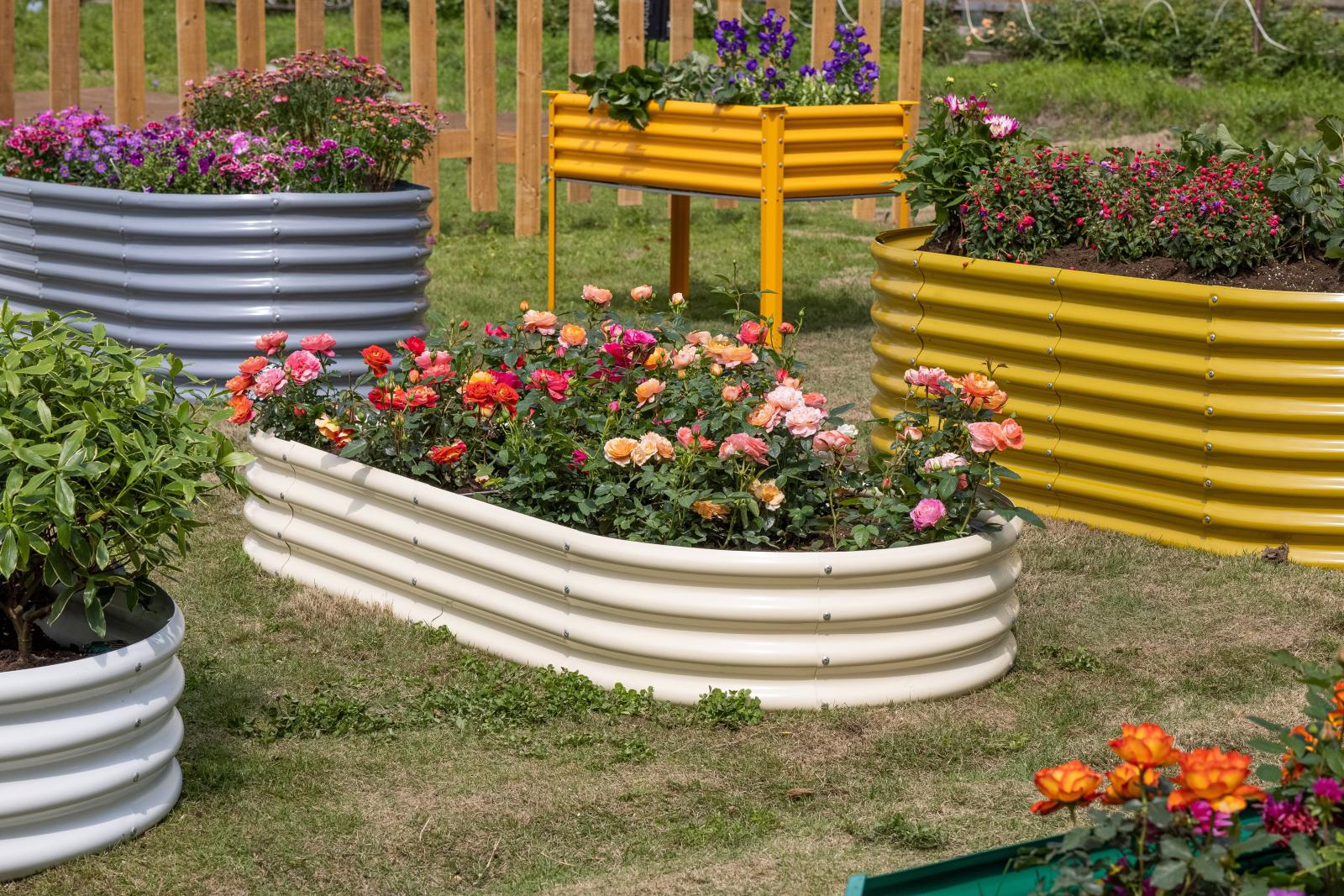Notifications

7 minutes, 8 seconds
-17 Views 0 Comments 0 Likes 0 Reviews

Raised garden beds have become a staple in modern gardening, offering an efficient and aesthetically pleasing way to grow vegetables, herbs, and flowers. Whether you're a seasoned gardener or just starting out, raised beds can simplify your gardening tasks and maximize your yields. In this guide, we’ll dive deep into the benefits, how-tos, and pro tips for Raised garden bed gardening.
A raised garden bed is a structure where the soil is elevated above ground level, typically enclosed by wood, metal, or composite materials. This contained environment allows for better control over soil quality, drainage, and weed management.
Wooden Beds – Popular and natural-looking.
Metal Beds – Durable and long-lasting, with a sleek design.
Composite Beds – Made from recycled materials; low maintenance and rot-resistant.
You control what soil goes into the bed, which means you can create the perfect mix for your plants. This is especially helpful in areas where the native soil is rocky, clay-heavy, or nutrient-poor.
Raised beds offer superior drainage compared to in-ground gardens. Excess water flows out easily, reducing the risk of root rot.
With the soil lifted off the ground, gardening becomes more ergonomic. Less bending means less strain, making it perfect for older gardeners or those with mobility issues.
Because the soil is separate and elevated, weed seeds are less likely to blow in or spread. Pests like slugs and snails also have a harder time reaching your plants.
The soil in raised beds warms up faster in spring and stays warmer into the fall, giving your plants a head start and a longer growing period.
Pick a sunny spot (at least 6–8 hours of direct sunlight per day) with good drainage. Avoid areas near trees, as roots can compete for nutrients.
Wood (e.g., cedar or redwood) is common for its natural look and rot resistance.
Galvanized steel is ideal for modern gardens and offers long-term durability.
Composite options are environmentally friendly and easy to maintain.
A common size is 4 feet wide by 8 feet long and 12–24 inches deep. Keep the width under 4 feet so you can easily reach the center from either side.
Clear grass or weeds and level the area. For extra protection, lay down landscape fabric or cardboard to suppress weeds from below.
Secure your chosen material using screws or brackets. Ensure the corners are square and the structure is level.
Use a mix of:
60% topsoil
30% compost
10% perlite or coarse sand for drainage
Add organic matter like worm castings or peat moss for a nutrient boost.
Nearly anything! Raised beds are versatile and can accommodate:
Vegetables: Tomatoes, lettuce, carrots, cucumbers, peppers, and more.
Herbs: Basil, thyme, mint, oregano, and rosemary.
Flowers: Marigolds, petunias, sunflowers, and zinnias.
Small Fruits: Strawberries, bush blueberries, and dwarf varieties of raspberries.
Crop rotation is easier in raised beds, and you can even add trellises for climbing plants like beans and peas.
Mulch regularly to retain moisture and suppress weeds.
Water deeply rather than frequently to encourage strong root growth.
Top off soil annually with compost or organic matter to maintain fertility.
Inspect for pests weekly and use organic remedies if needed.
Practice companion planting to enhance growth and deter pests naturally.
|
Feature |
Raised Garden Bed |
Traditional In-Ground Garden |
|
Soil Control |
High |
Low |
|
Drainage |
Excellent |
Varies |
|
Accessibility |
Better (less bending) |
Poor |
|
Weed Management |
Easier |
Harder |
|
Initial Cost |
Higher |
Lower |
|
Lifespan |
Long-lasting |
Depends on soil quality |
No. A well-built raised bed using durable materials like cedar or metal can last 10–20 years with proper care.
It depends on the weather and plants, but generally 2–3 times per week. During hotter months, daily watering might be necessary.
Yes, but ensure proper drainage by adding a layer of gravel and using a deep enough bed (at least 12 inches) for root growth.
You can use cardboard, newspaper, or landscape fabric to block weeds. Adding a layer of gravel or coarse sand helps with drainage.
Raised garden beds are more than a gardening trend—they’re a smart, effective way to grow plants in nearly any environment. From improved soil control to accessibility and aesthetics, raised beds offer multiple advantages for both new and experienced gardeners. Whether you’re growing fresh produce for your family or creating a floral oasis, raised beds give you the flexibility, beauty, and productivity you need to make the most of your garden.

